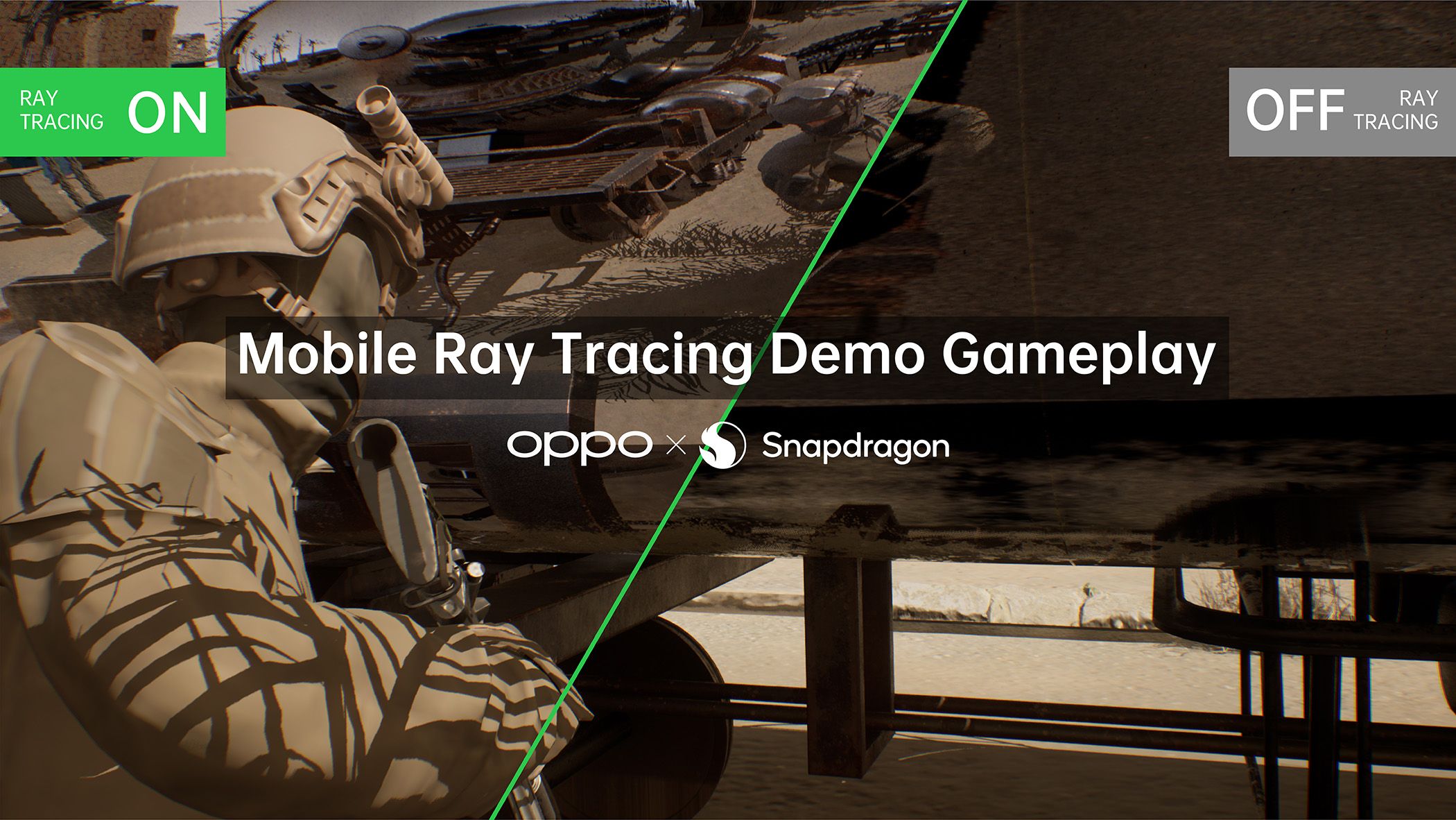It aims to help developers easily implement ray tracing into mobile games and other experiences
Samsung debuted an Exynos SoC with hardware-accelerated ray tracing support earlier this year. The all-new Exynos 2200 features the first AMD RDNA 2-based GPU, the Xclipse 920, which not only allowed ray tracing on mobile but also promised immersive “console-quality” visuals in mobile games. Arm followed it up with the Immortalis-G715 GPU in June, the first GPU to support hardware-accelerated ray tracing. Qualcomm is now following suit with its latest flagship chipset, the Snapdragon 8 Gen 2. Prior to its official announcement, Oppo showcased its open ray tracing solution that will enable developers and creators to deliver new ray tracing experiences on devices featuring Qualcomm’s latest chipset.
Oppo’s mobile ray tracing solution uses a modified version of Oppo’s proprietary PhysRay SDK that enables ray tracing technology. “To be applied to complex and large-scale mobile game scenes.” Oppo demonstrated its tech prowess with a first-person shooter game called “Camp Guard,” with more than 2,000 physical models, 800,000 triangles, and nearly 100 textures at Snapdragon Summit 2022. The interactive demo shows realistically enhanced shadows, lights, and reflections reacting to movement. The model and the player’s camera angle. Oppo claims that the first-person shooter platform demo can be played at 720p at 60fps for half an hour on a room-temperature device featuring the Snapdragon 8 Gen 2 SoC.
In a press release about its new ray tracing solution, Oppo indicated that it has worked with Qualcomm on it “Driver testing, shader optimization, and compiler tool development on the game scene.” The companies have also improved the PhysRay Engine 2.0 drivers so that the new Snapdragon 8 Gen 2 can seamlessly render different ray tracing effects and textures. Oppo’s solution also supports Qualcomm’s Variable Rate Shading (VRS) technology, which ensures that the PhysRay 2.0 engine “It can run efficiently on Snapdragon 8 Gen 2. Greatly improve graphics while solving power consumption issue.”
Although the Oppo PhysRay 2.0 engine uses PhysRay’s proprietary SDK, it is a fully open ray tracing solution available to all game developers and creators globally. The company believes that the following three features make it a great choice for game developers looking to implement ray tracing on their titles:
- Convenient: The PhysRay Engine supports hybrid rendering for ray tracing and rasterization. Game developers can add Oppo’s mobile ray tracing pipeline directly without making drastic changes to the traditional rendering pipeline.
- Adaptive: The PhysRay engine is not only able to dynamically adjust the complexity and efficiency of the ray tracing algorithm according to different scenarios, but also adopts a standard port. It integrates with artificial intelligence and supports physical sensors, in order to support full-path ray tracing and other effects in the future. Developers can take full advantage of ray tracing technology on mobile devices without restrictions, and produce more unique and stunning results.
- Balance: Opp’s collaboration with Qualcomm Technologies has made the PhysRay Engine more balanced in terms of performance and power consumption. Based on the premium Snapdragon 8 Gen 2, Oppo’s PhysRay Engine has increased ray tracing efficiency by a factor of 5, reduced CPU workload by one-tenth, and enabled all PBR combinations.
[ad_2]





